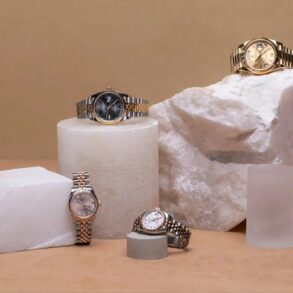
Photo: VCG
As concerns over inflation and high price linger on, more US consumers have been growing wary of shopping spending during this year’s Black Friday, the US’ biggest annual shopping spree that falls on Friday (US Time), the Global Times learned. Such uncertainty has reportedly prompted a number of large US retailers to cut their financial estimates on the shopping season as well as the fourth quarter, traditionally a sales bonanza.
Analysts predicted that this year, there will only be a small gain in the US holiday spending, with the extent of increase still falling behind the pre-virus reading, or some cases even staying flat as last year’s. That laid bare a bunch of challenges the US economy is now facing, ranging from lack of growth engines, fallout of sky-high inflation, high unemployment rate, to debt strains.
The likely lackluster spending in the US is a stark contrast to the vigorous Chinese consumers’ spending power, which is on the vivid display at the annual “Double 11” shopping festival that falls on November 11. Sales at China’s shopping carnival, which is also the world’s largest, were estimated to see double-digit growth, underscoring China’s fast-lane consumption recovery that is set to channel new impetus to global economy.
A Washington-based consumer Richard told the Global Times on Friday that she has cut the budget for Black Friday spending this year, and would only buy goods that offer steep discounts. The Black Friday shopping season comes a day after the Thanksgiving and lasts until Cyber Monday.
According to Richard, the warier mood is common among US consumers, despite an ease in US inflation in October that boosts hope that the country will be at the end of the interest rate hike cycles.
“My friends have also grown more cautions and price sensitive, and some of them even do not plan to buy anything this year. We are all fed up with the year-long high price and the overall price is still significantly higher than pre-pandemic level,” She said.
A McKinsey survey showed that 79 percent of US consumers are looking to “trade down” for holiday shopping this year. The percentage has risen 5 percentage points from July 2022. A report from Deloitte noted that US consumers expect to spend 18 percent less in November from October.
Multiple signs have pointed to “cooler” Black Friday holidays in the US, traditionally an annual shopping extravaganza that was featured by lengthy lines, crowds of bargain-hunters and eye-catching promotions in brick-and-mortar stores.
This year, while US merchants are still offering huge discounts to draw consumers, they have also become less certain on the outlook of holiday shopping.
In early November, US Luxury retailer Tapestry cut its annual sales forecast, citing slowing demand. Its first quarter revenue which ended on September 30 took a hit from weak demand for its luxury handbags and shoes in North America. US electronic retailer Best Buy also lowered its annual revenue guidance in mid-November as a result of consumer uncertainty.
“As high price still persists, the growth in total sales is likely to slow down from last year’s Black Friday. This is the direct fallout of US economic situation and irresponsible monetary policy, which drives up the lending cost of US families and casts clouds on US consumers’ sentiment,” Tian Yun, a veteran economist based in Beijing, told the Global Times on Friday.
According to an estimate by Adobe Analytics, sales for the Black Friday shopping season (the full months of November and December) in the US are expected to reach $221.8 billion. Last year, sales hit $211.7 billion.
As consumption – a US economy pillar – loses steam, market concerns over the US economy have also mushroomed, observers said, with some warning of a looming US economic downturn that could weigh on global recovery.
Chinese observers also compared US Black Friday with China’s “Double 11” shopping spree, which are said to be the largest shopping festivals of both countries. Although the Chinese sales tally was not provided, the country’s State Post Bureau and some e-commerce giants reportedly witnessed “record numbers” with various highlights.
“The price in China has fallen compared with 2022 ‘Double 11,’ while the sales saw a big jump, which mirrors the vitality and potential of China’s consumption bounce-back. It also augurs well for the global development,” Tian explained.
Sales for last year’s “Double 11” reached 1.15 trillion yuan ($157.97 billion), according to a recent report from US consultancy firm Bain. That figure is more than four times the $35.3 billion US shoppers spent during the Cyber Week – from Black Friday to Cyber Monday, according to Reuters.
This post was originally published on this site be sure to check out more of their content.





